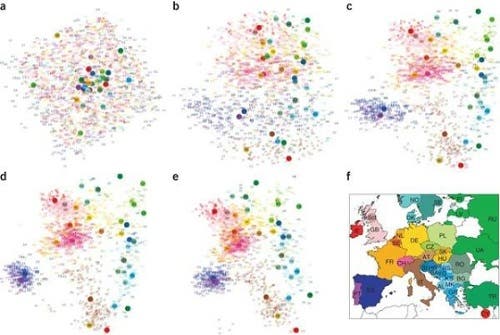Genetic diversity is what keeps species evolving, helps them tackle diseases and is a prime pre-requisite for natural selection. Understanding genetic diversity is imperitive for scientists in the field, whether it’s about identifying associations between genetic variants and diseases or highlighting interesting aspects of human population history. One of these aspects is geographical location.
Remarkably, an international team of scientists comprised of researchers from UCLA Henry Samueli School of Engineering and Applied Science, UCLA’s Department of Ecology and Evolutionary Biology and Israel’s Tel Aviv University have successfully and quite accurately managed to pinpoint the geographical origin of an individual on the basis of their genetic information alone.

To achieve this, the scientists developed a radical approach to the study of genetic diversity called spatial ancestry analysis (SPA), which allows for the modeling of genetic variation in two- or three-dimensional space. Using this novel method, researchers can model the spatial distribution of each genetic variant by assigning a genetic variant’s frequency as a continuous function in geographic space. Genetic variant frequency relates to the proportion of individuals who carry a specific variant (change in the chemical structure of a gene).
“If we know from where each individual in our study originated, what we observe is that some variation is more common in one part of the world and less common in another part of the world,” said Eleazar Eskin, an associate professor of computer science at UCLA Engineering. “How common these variants are in a specific location changes gradually as the location changes.
“In this study, we think of the frequency of variation as being defined by a specific location. This gives us a different way to think about populations, which are usually thought of as being discrete. Instead, we think about the variant frequencies changing in different locations. If you think about a person’s ancestry, it is no longer about being from a specific population — but instead, each person’s ancestry is defined by the location they’re from. Now ancestry is a continuum.”
That’s not to say that the method can tell you where you’re from simply based on your DNA; it’s based on a probabilistic model after all, but it’s still surprisingly accurate. The scientists involved in the study believe the method could be used to infer geographic origins for each individual using only their genetic data with surprising accuracy. “Existing approaches falter when it comes to this task,” said UCLA’s John Novembre, an assistant professor in the department of ecology and evolution.
SPA is also able to model genetic variation on a globe.
“We are able to also show how to predict the spatial structure of worldwide populations,” said Eskin, who also holds a joint appointment in the department of human genetics at the David Geffen School of Medicine at UCLA. “In just taking genetic information from populations from all over the world, we’re able to reconstruct the topology of the global populations only from their genetic information.”
Funding for the study was provided by the National Science Foundation and the National Institutes of Health. The findings were presented in the journal Nature Genetics.
source: SciGuru






